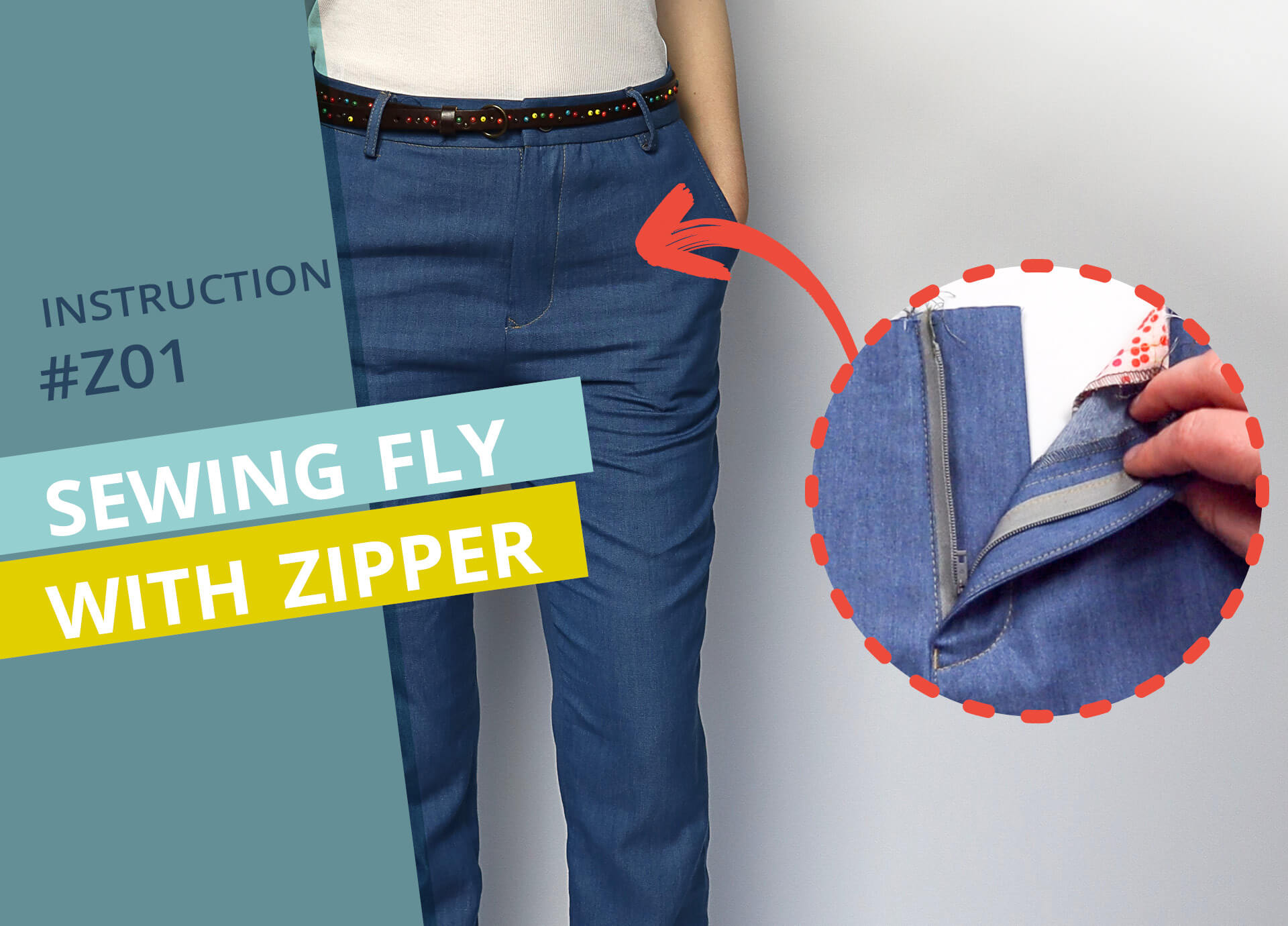Sewing fly with zipper #Z01
Selfmade and tailor-made! In the following tutorial, I explain step by step how to sew a fly with zipper into a pair of trousers using video and illustrated text instructions. The fly is worked into the left center front and has an underlap on the right side. Then have fun!
1. This is required
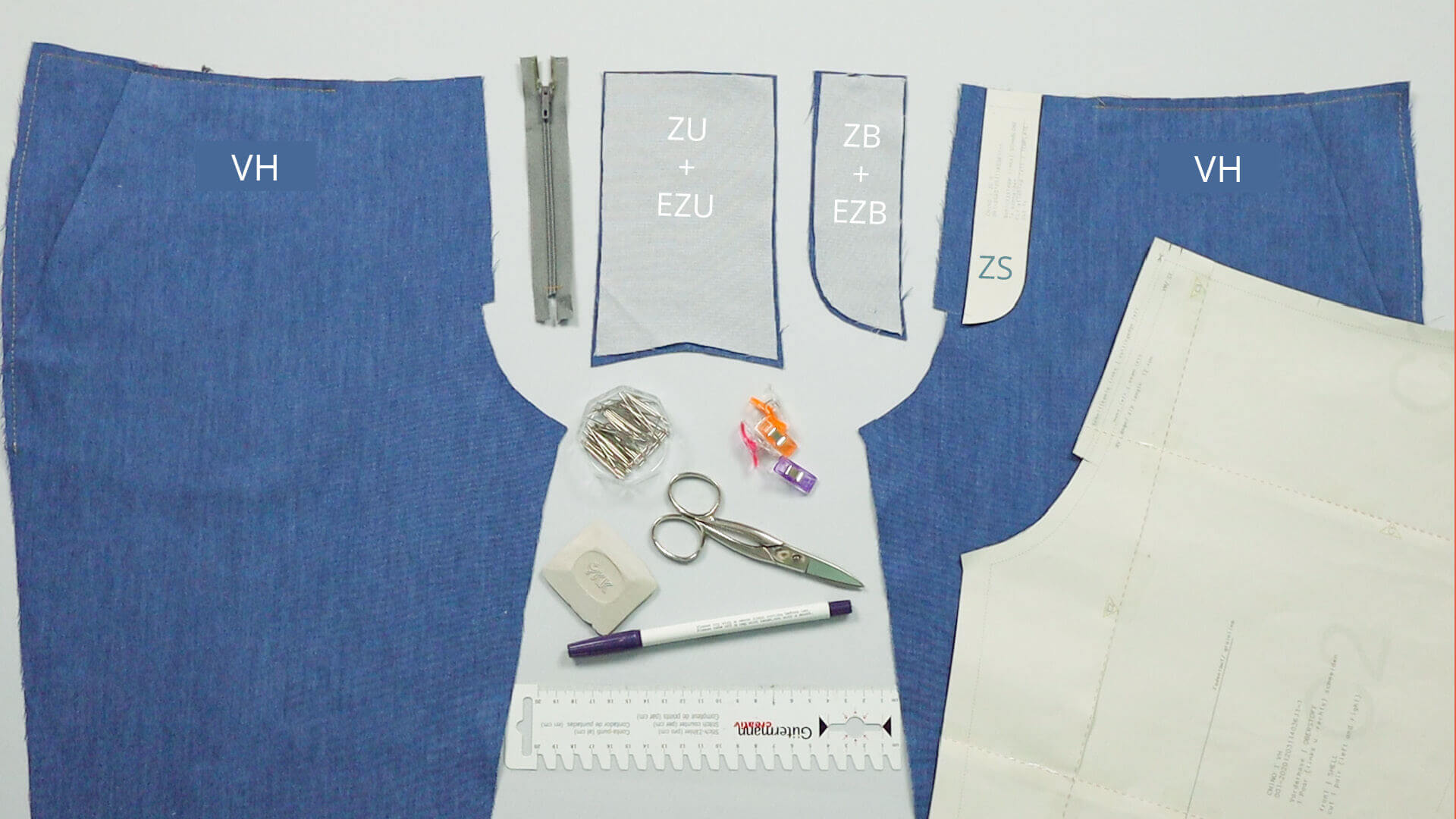
Pattern pieces made from main fabric:
- front pieces (VH) – 1 pair
- fly facing (ZB) – 1 x
- fly shield (ZU) – 1 x
Pattern pieces from interfacing:
- fly facing (EZB) – 1 x
- fly shield (EZU) – 1 x
Paper pattern pieces:
- front trousers (VH)
- template for the fly stitching (P-SZ)
Tools and materials:
- 1 zipper (see instrucions or front pattern piece for required length)
- pins or clips
- scissoers
- tailor’s chalk or fabric marker
- ruler
2. Iron on interfacing
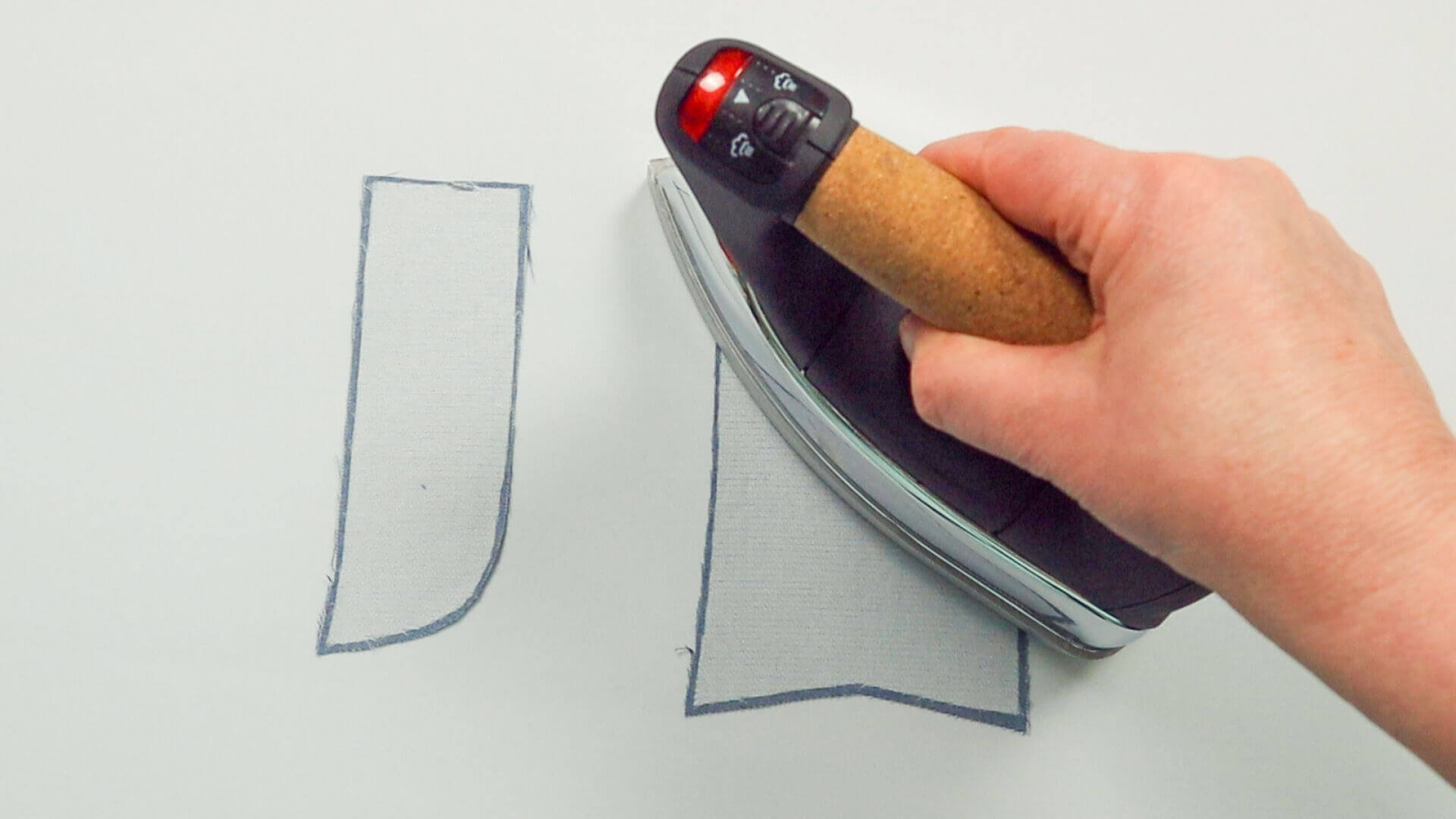
I start by ironing the interfacing onto the wrong side of the fly facing and fly shield.
3. Produce fly shield for fly with zipper
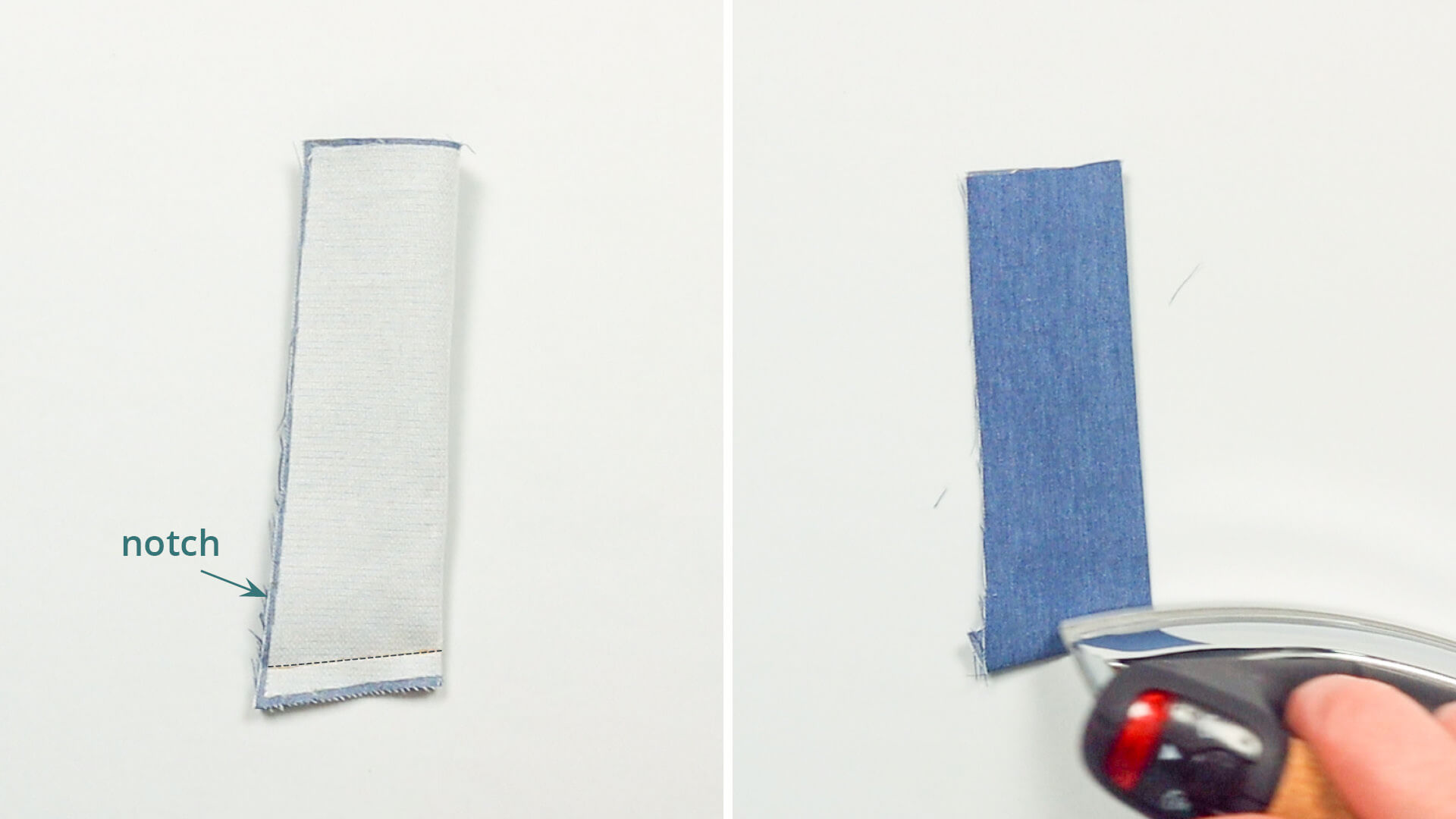
I fold the bottom of the fly shield in half lengthwise, right sides together, and sew the bottom edge (this is the side where the side notch are located) with a 10 mm seam allwoance. Then I turn the piece over and press it in half from the outside.
4. Sew on the left fly facing
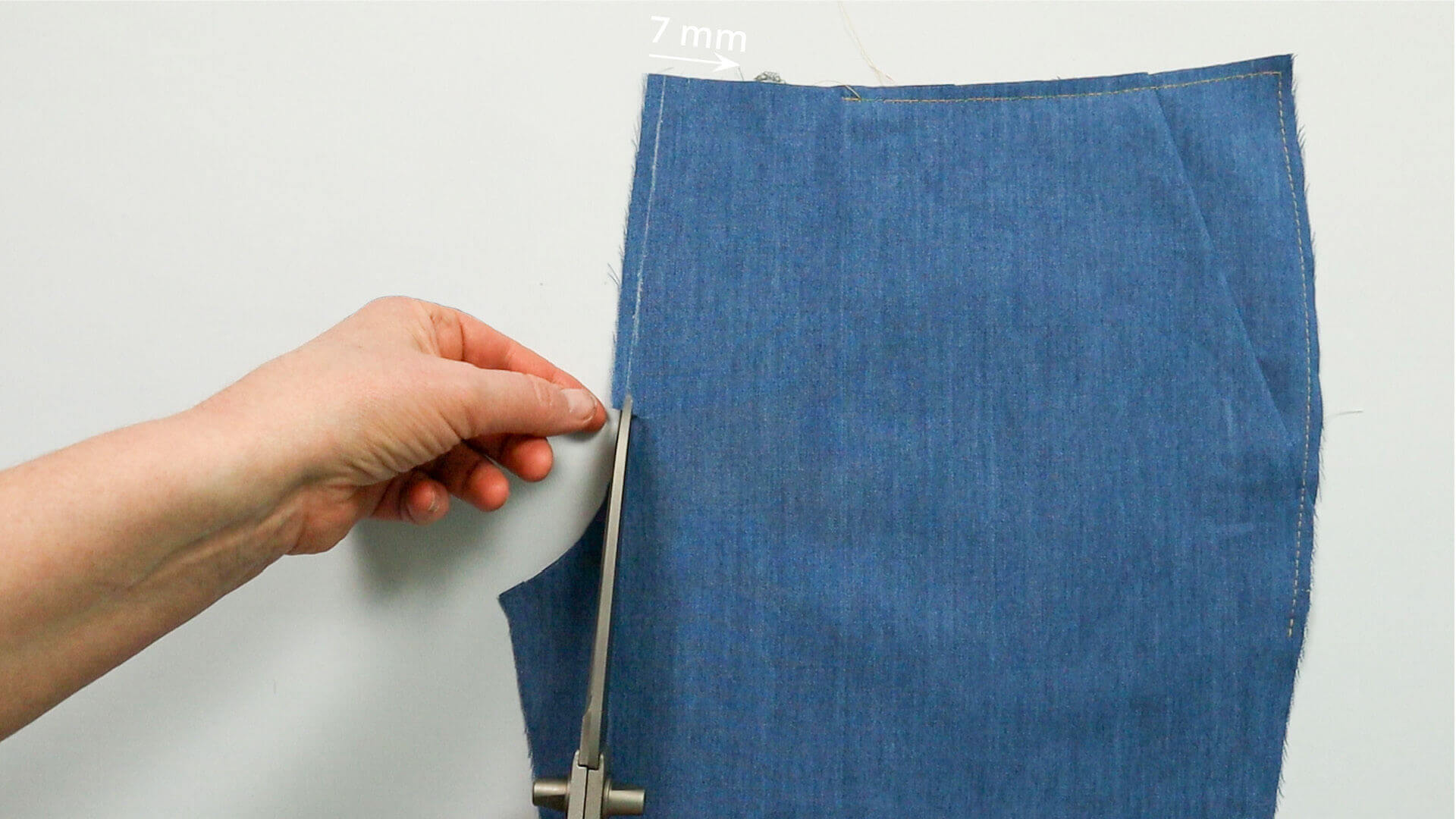
I trim the front edge at the center front by 7 mm. This cutting line is marked in the pattern so you can use it as a guide.
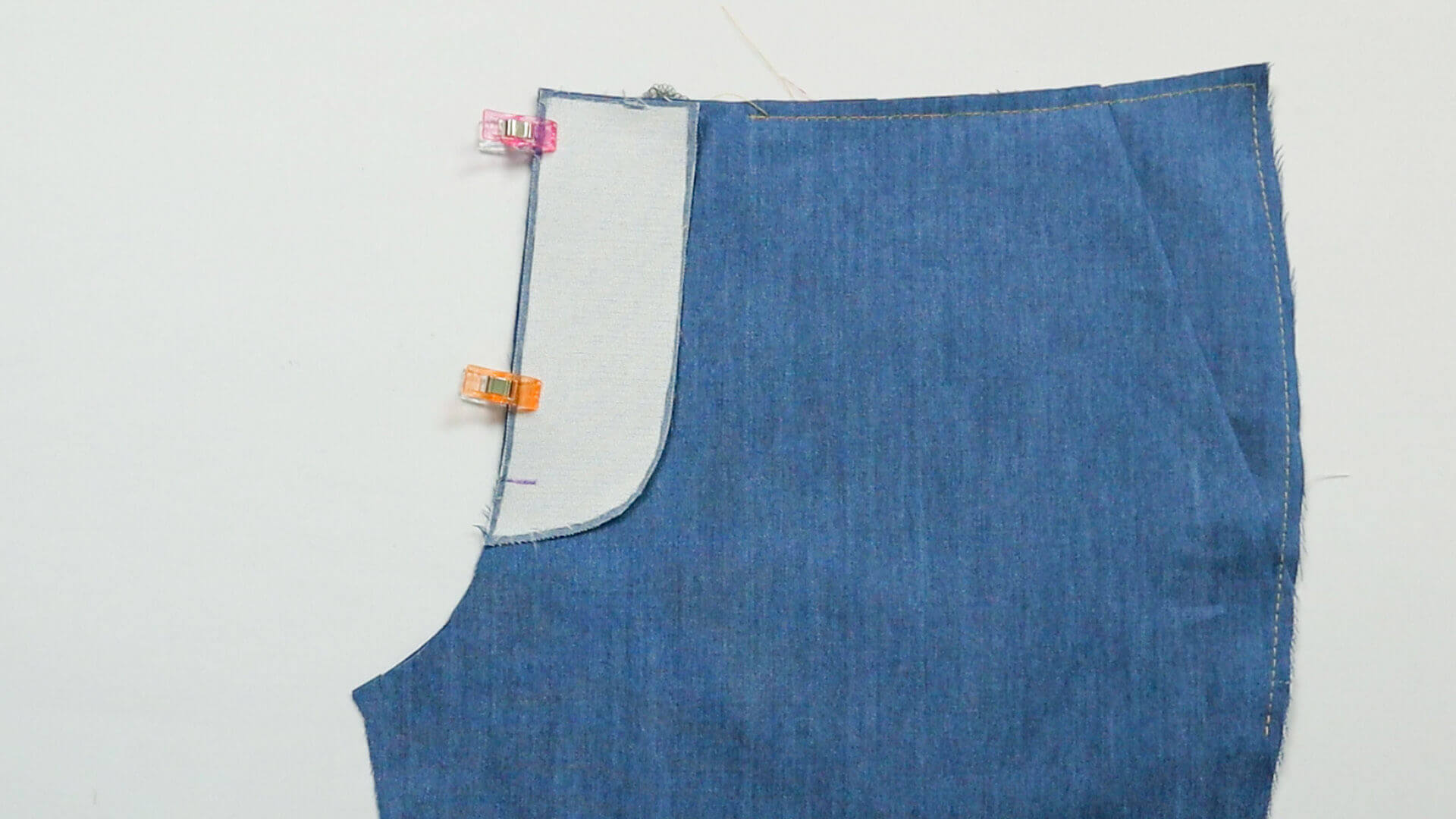
I place the left fly facing from the top flush right sides facing, pin it in place and mark the end of the fly at the notch. I stitch the pieces together with a straight stitch with a 10 mm seam allwoance, starting exactly at the notch. The fly end is secured with some forward and backward stitches.
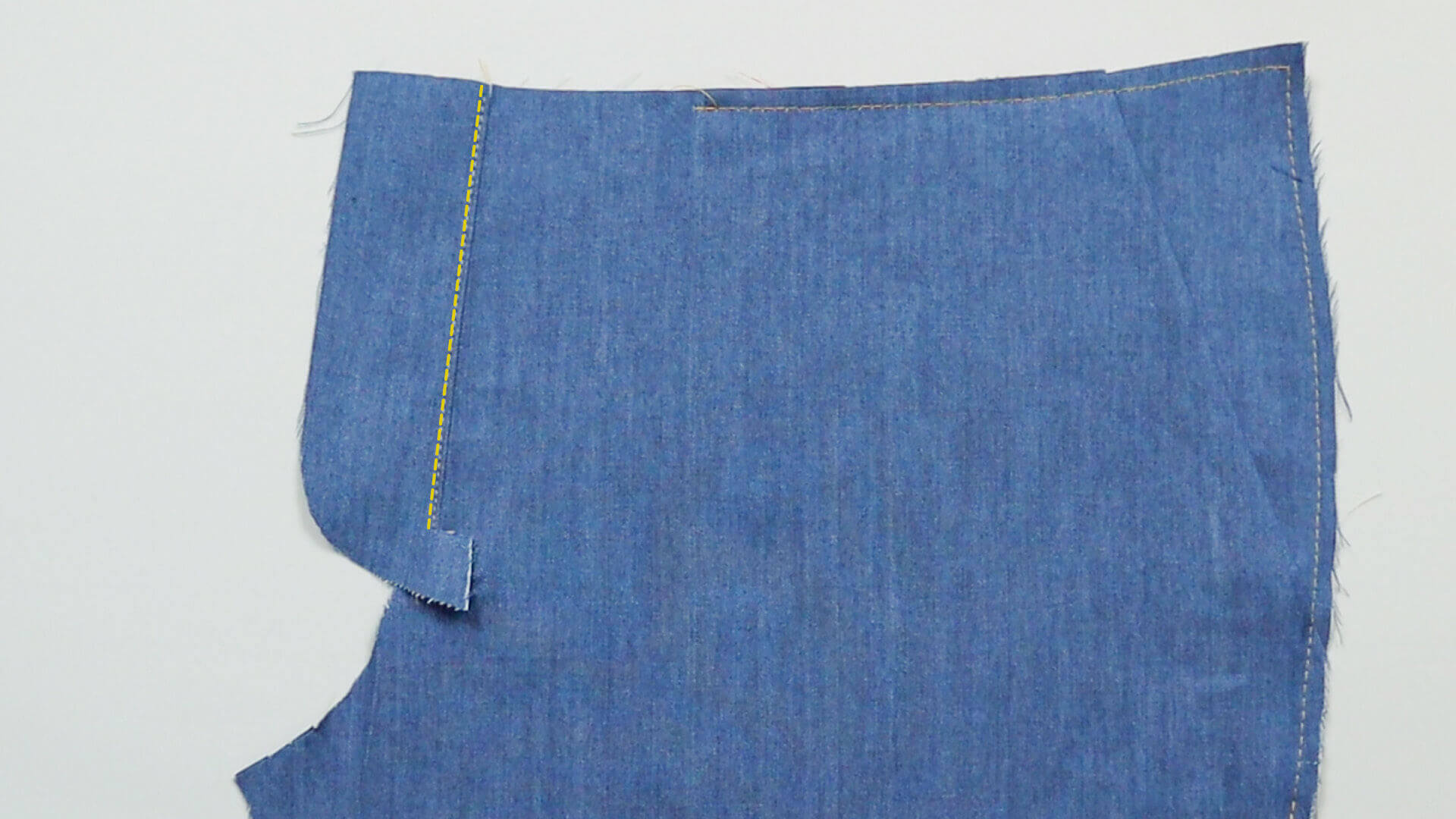
At the notch at the fly end, I cut the seam allowances right up to the seam. Before turning the edge, you can iron over the seam allowance or stitch it down with a 2 mm distance to the seam on the facing side.
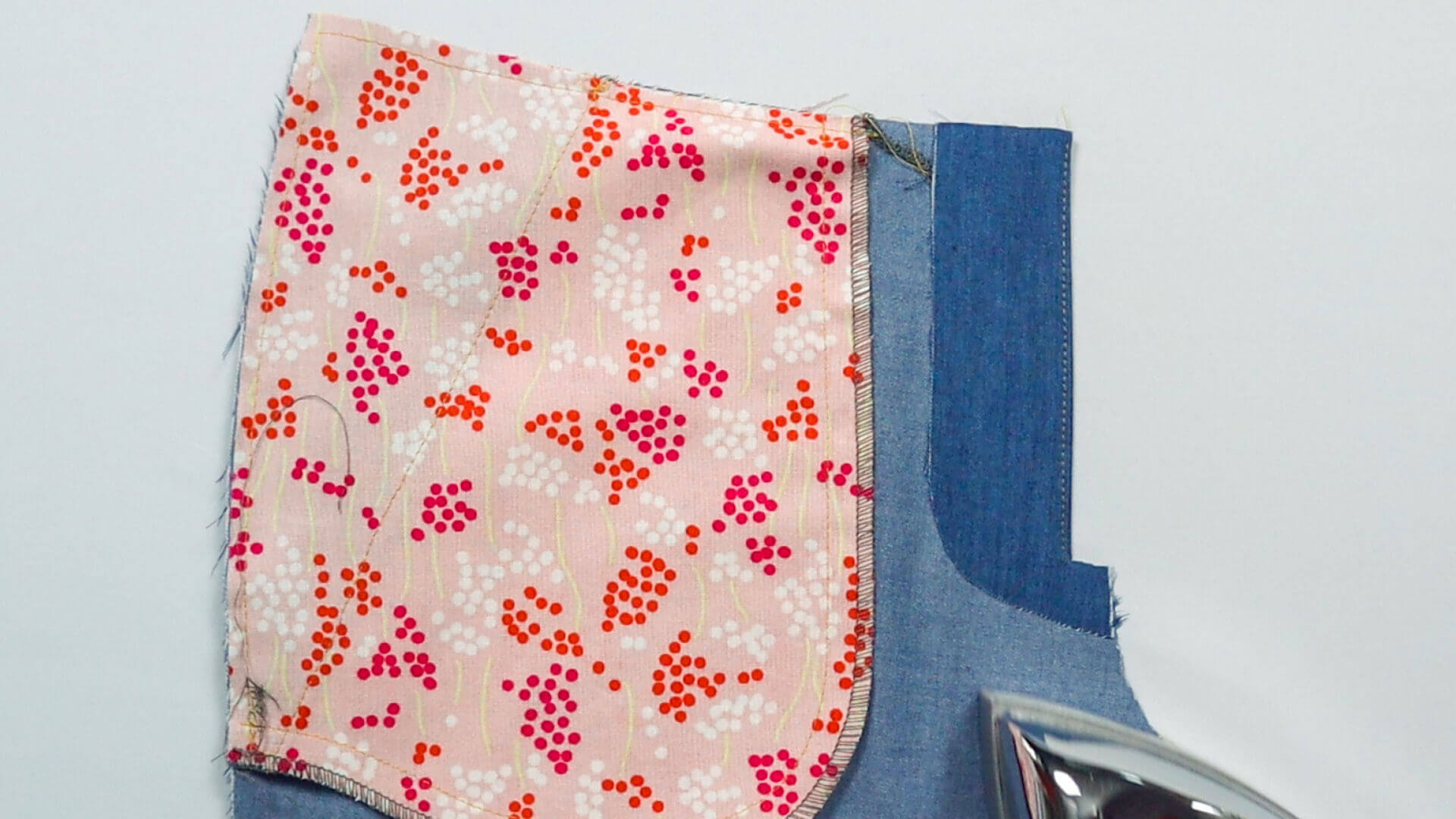
I turn the fly facing inwards and iron it in place. I place the lower cut edge of the facing to the cut edge of the front trousers. Depending on the design, the fly can be topstitched at the front edge, in which case you can skip the downstitching beforehand.
5. Overlocking the cut edges
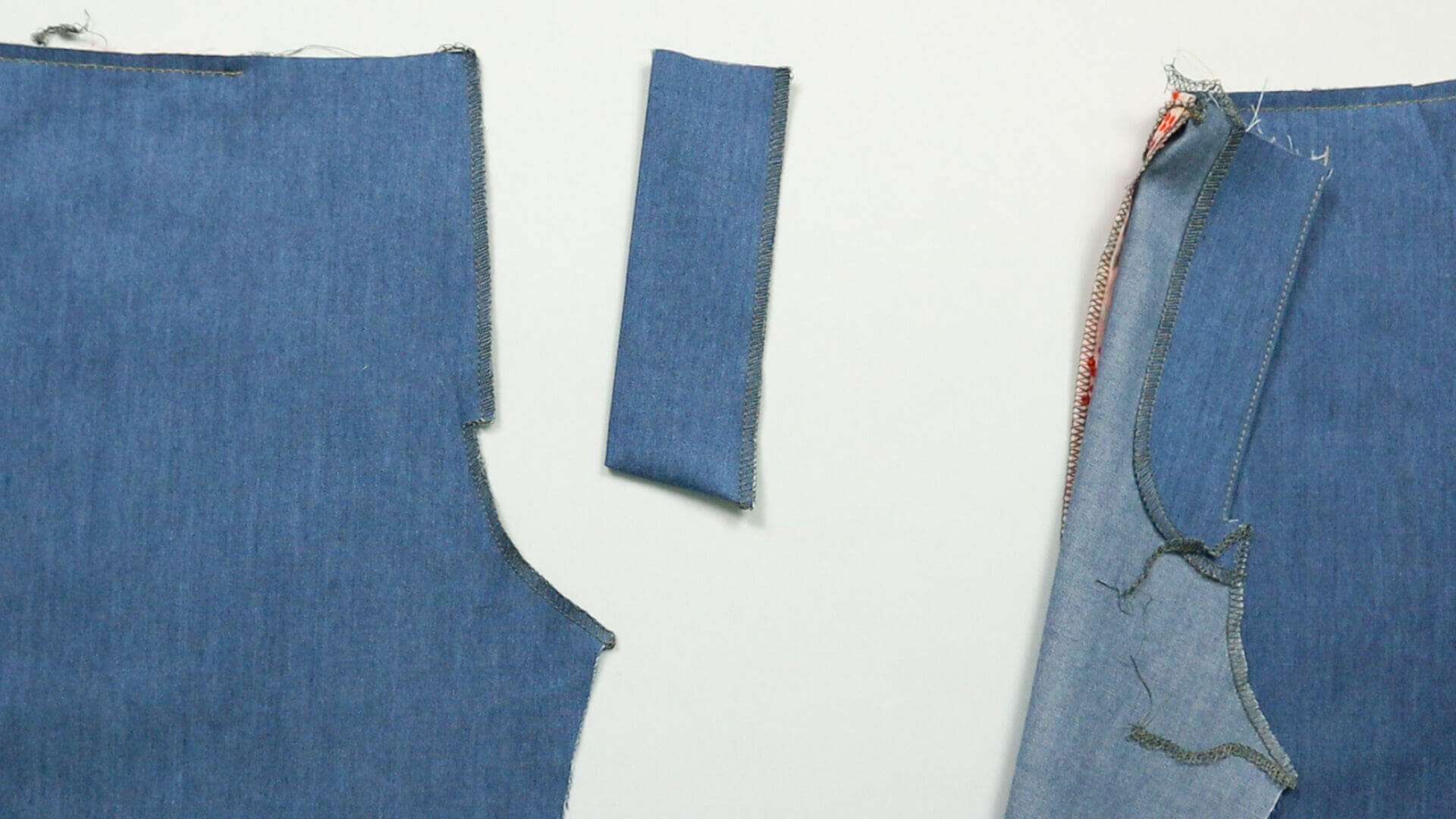
I finish the back raw edges of the fly facing, the crotch seams of both front pieces, the front edge of the left front piece and the back edge of the pressed fly shield using my my overlock machine or a zigzag stitch.
6. Sew on zipper on the right side
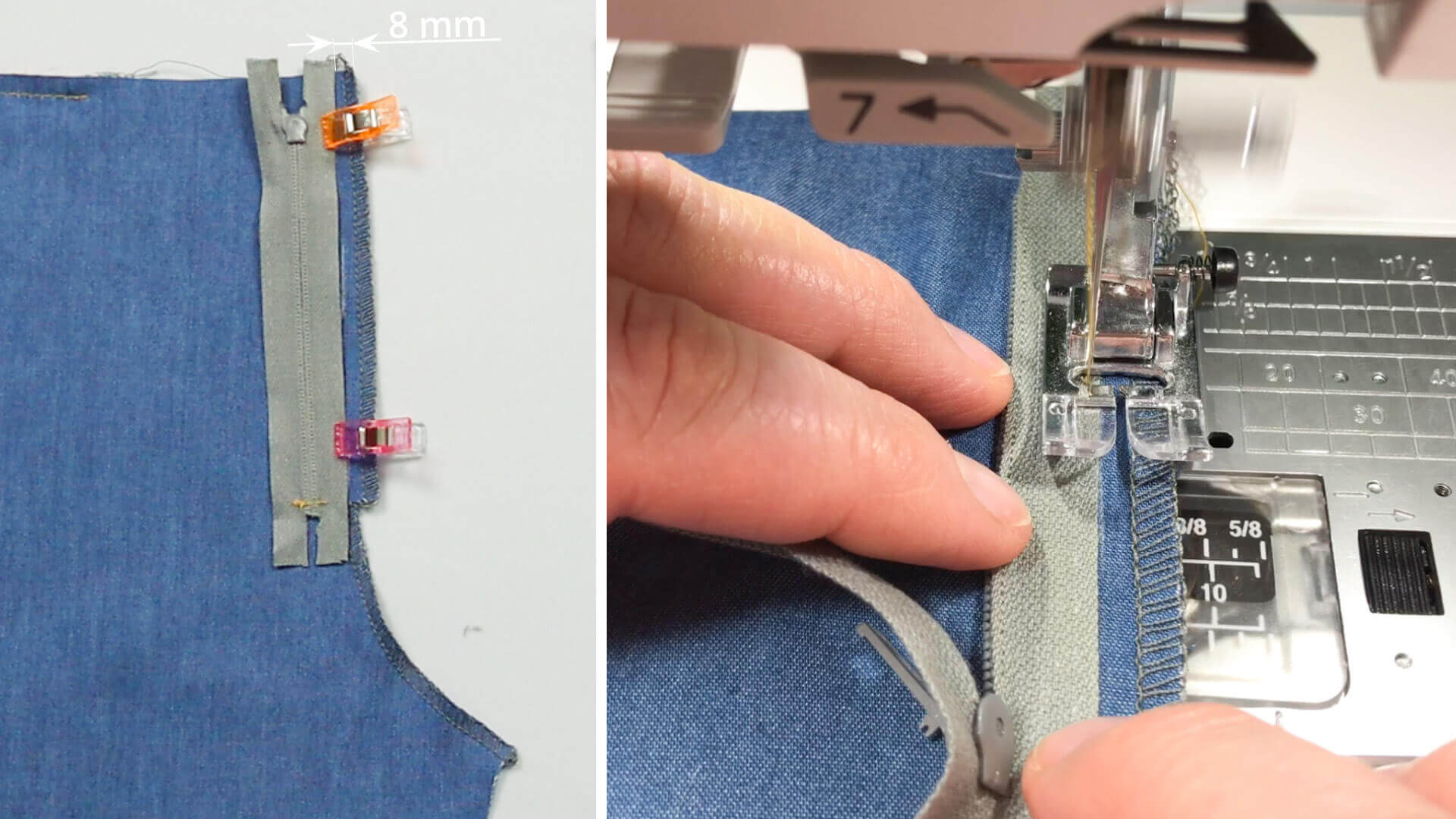
The measurement of the required zipper length is noted on the pattern of the front pattern piece and in the instructions. It can also be determined by measuring and corresponds to the length at the center front from the notch to the top edge minus 15 mm. I place the zipper right sides together (i.e. with the slider on the right side of the fabric) on the right front piece. Then I mark 8 mm from the front cutting edge and 15 mm from the top edge. I place the zipper tape in place and stitch it on close to the edge.
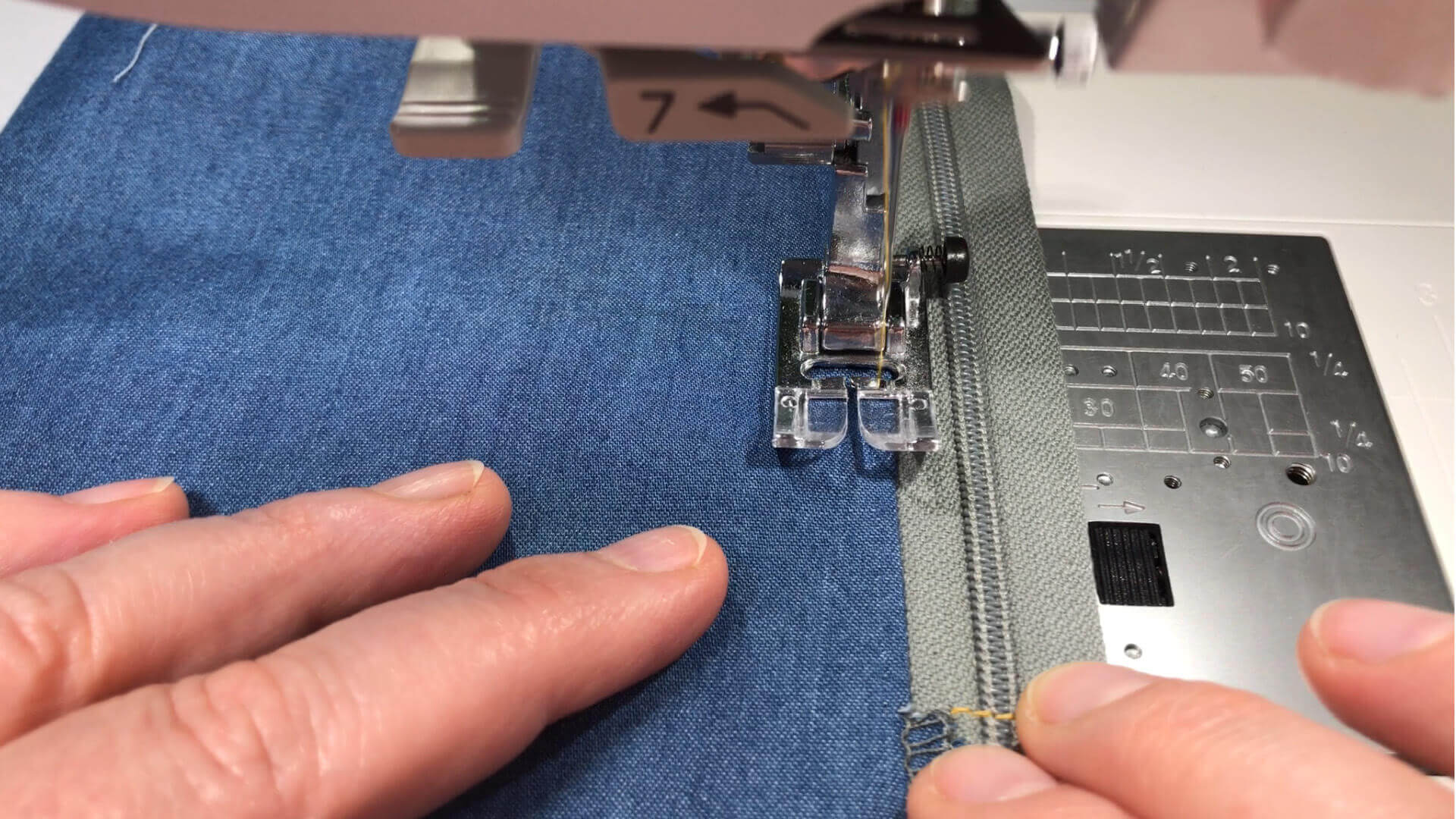
The zipper is now folded over so that the right side is visible. Then I topstitch the seam narrow-edged on the front piece.
7. Connect the front pieces
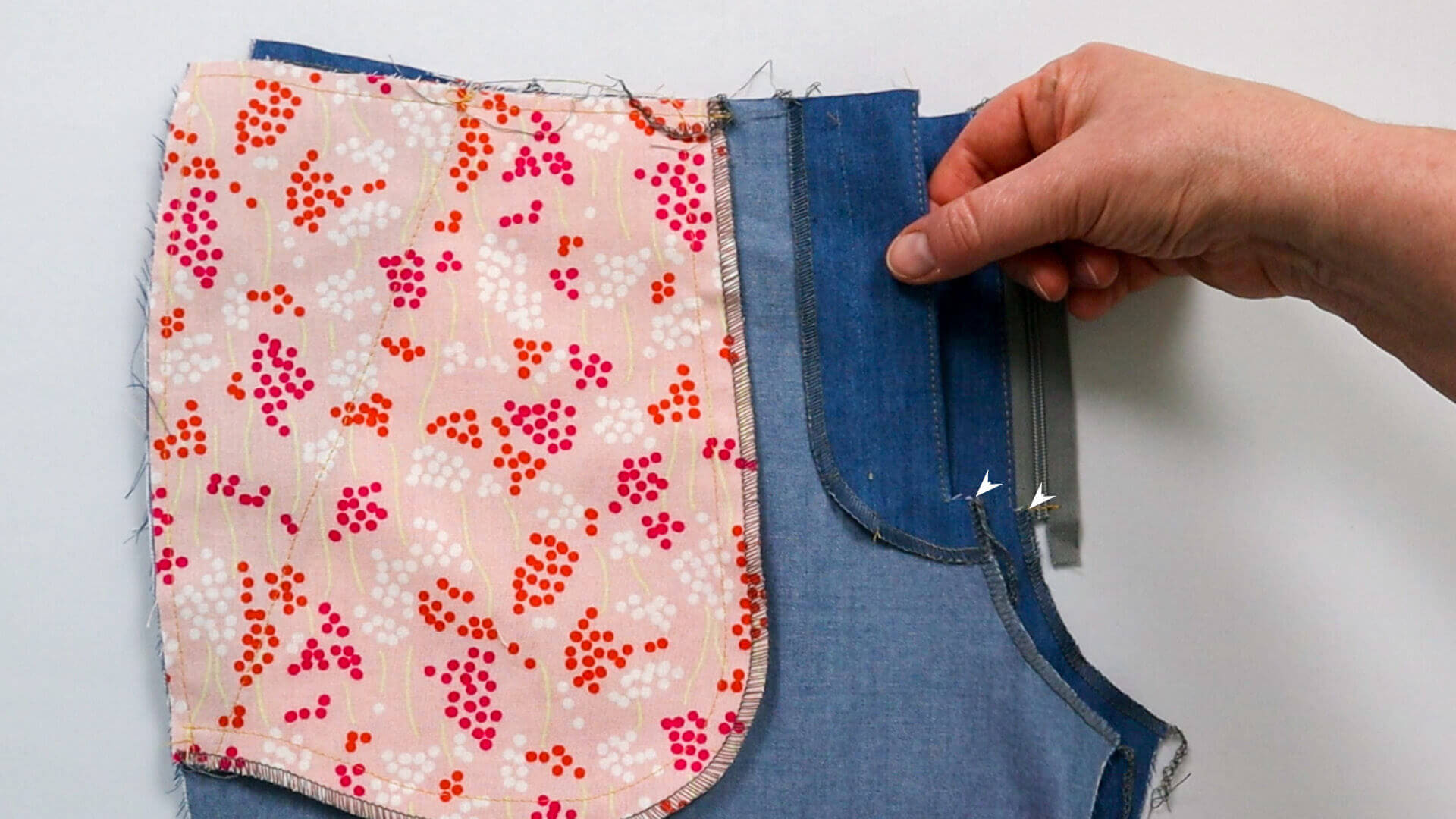
Now I join the two front pieces together. To do this, I place them right sides together. I sew the crotch seam exactly to the fly end with a seam allowance of 10 mm.
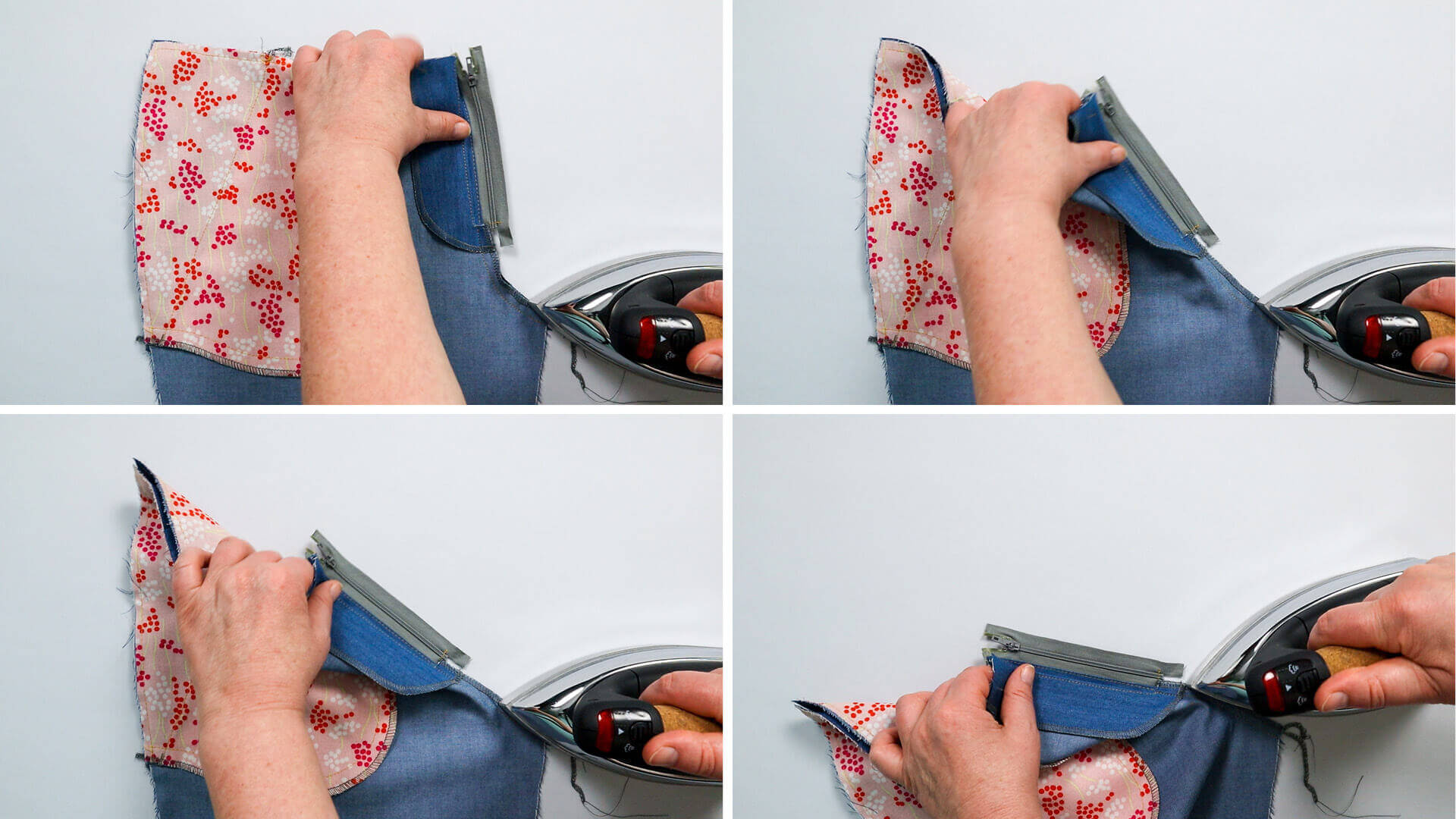
I stretch the seam allowance in the curve by pressing. Caution – the seam itself should not be stretched too much.
8. Stitch the zipper to the fly facing
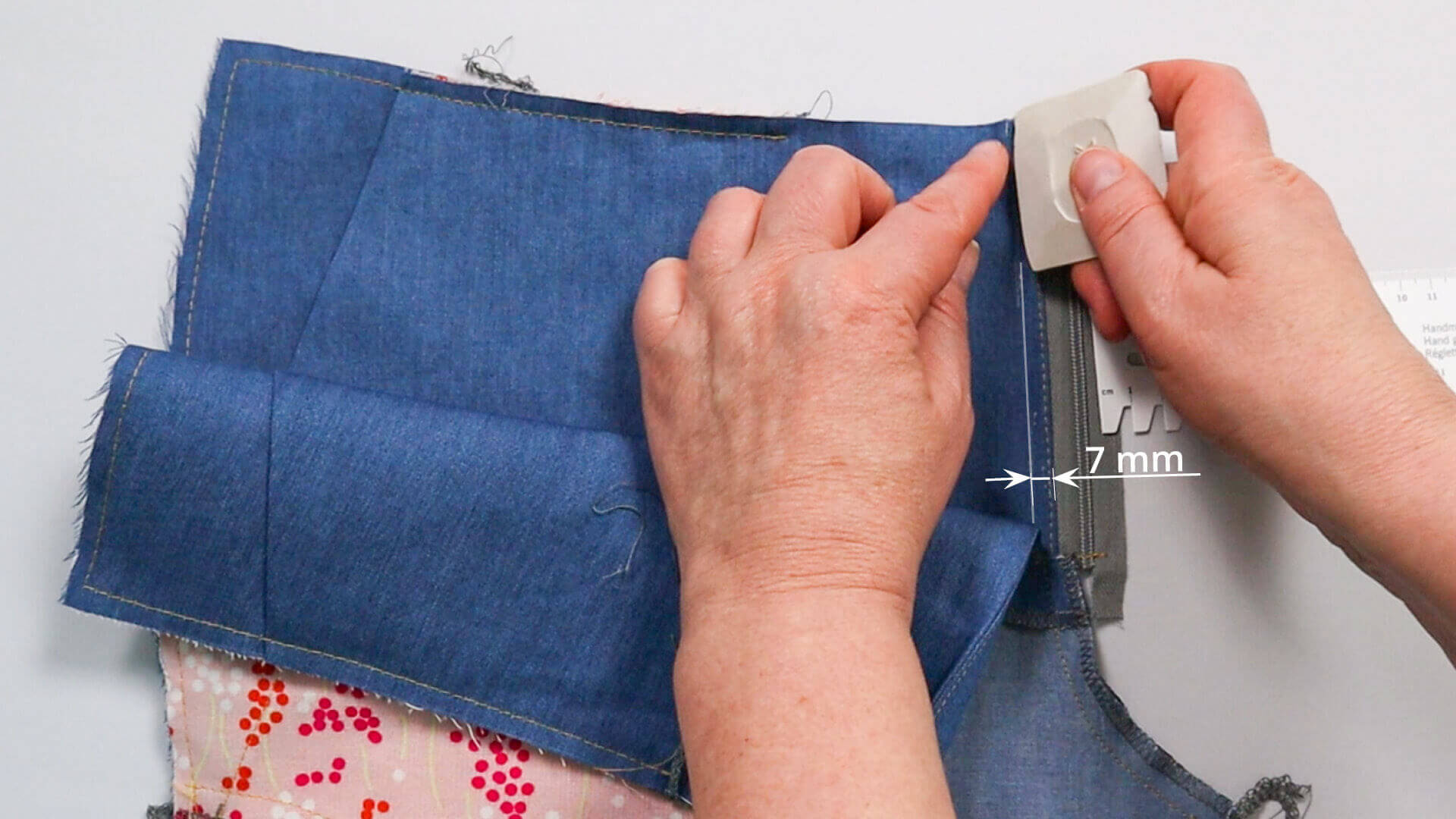
I draw the center front 7 mm parallel to the zipper on the right front piece.
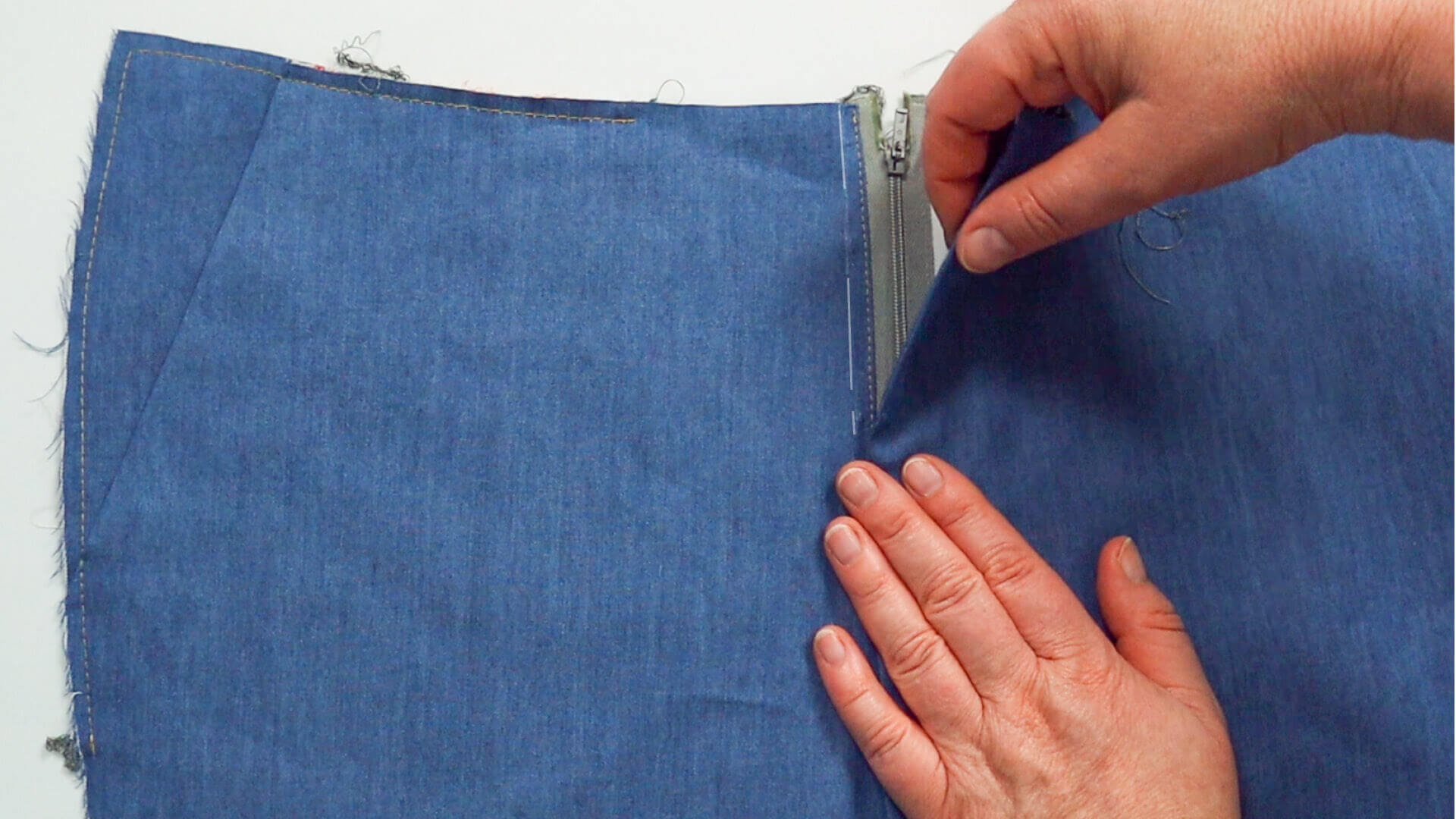
I place the left front edge (where the fly facing was attached) on this line and pin it in place. Both front pieces are placed with the right side of the fabric facing up.
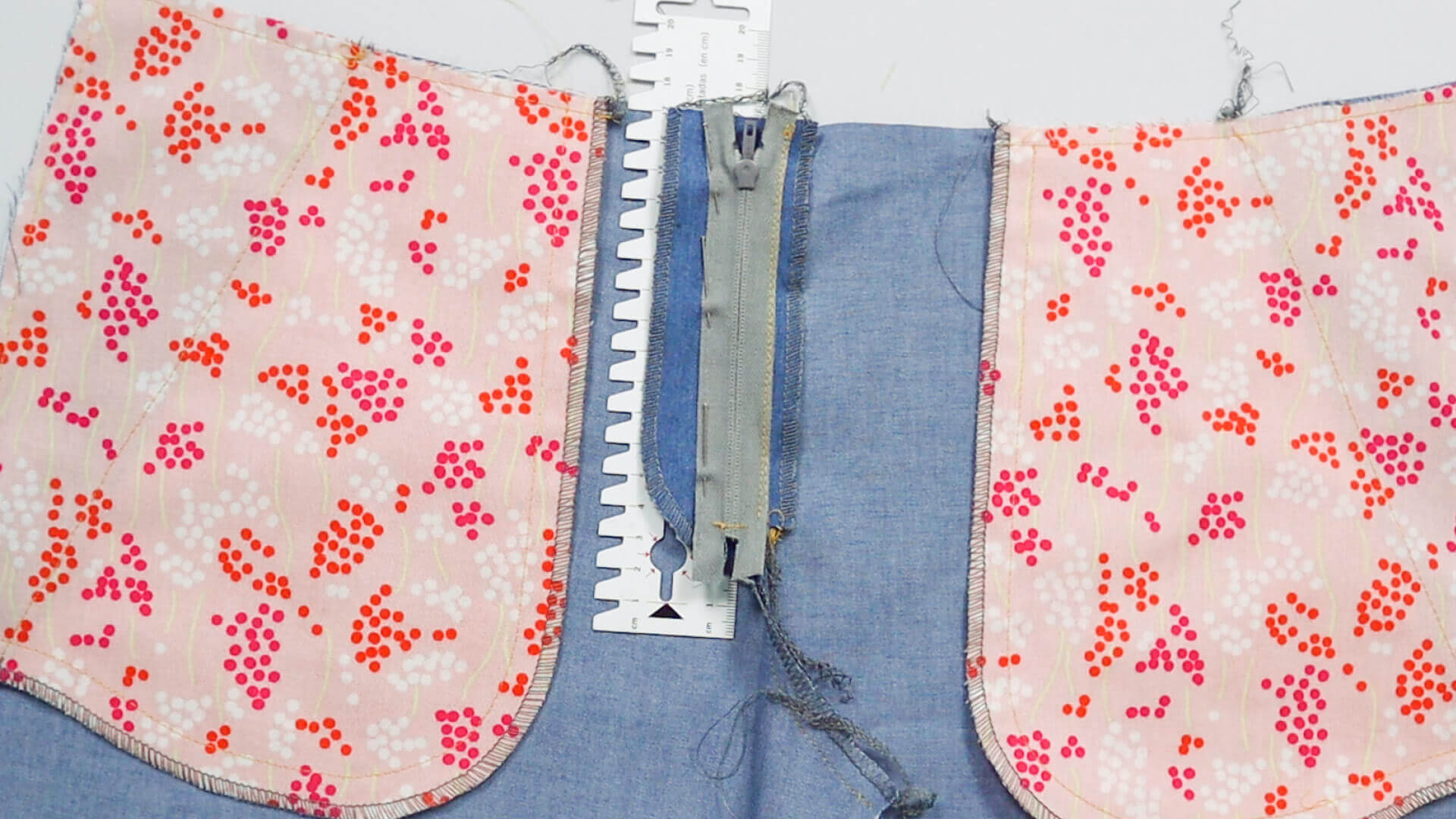
Then I turn the front pieces to the wrong side and pin the zipper to the facing. It is helpful to place a ruler under the fly facing to prevent stitching through the front trouser piece.
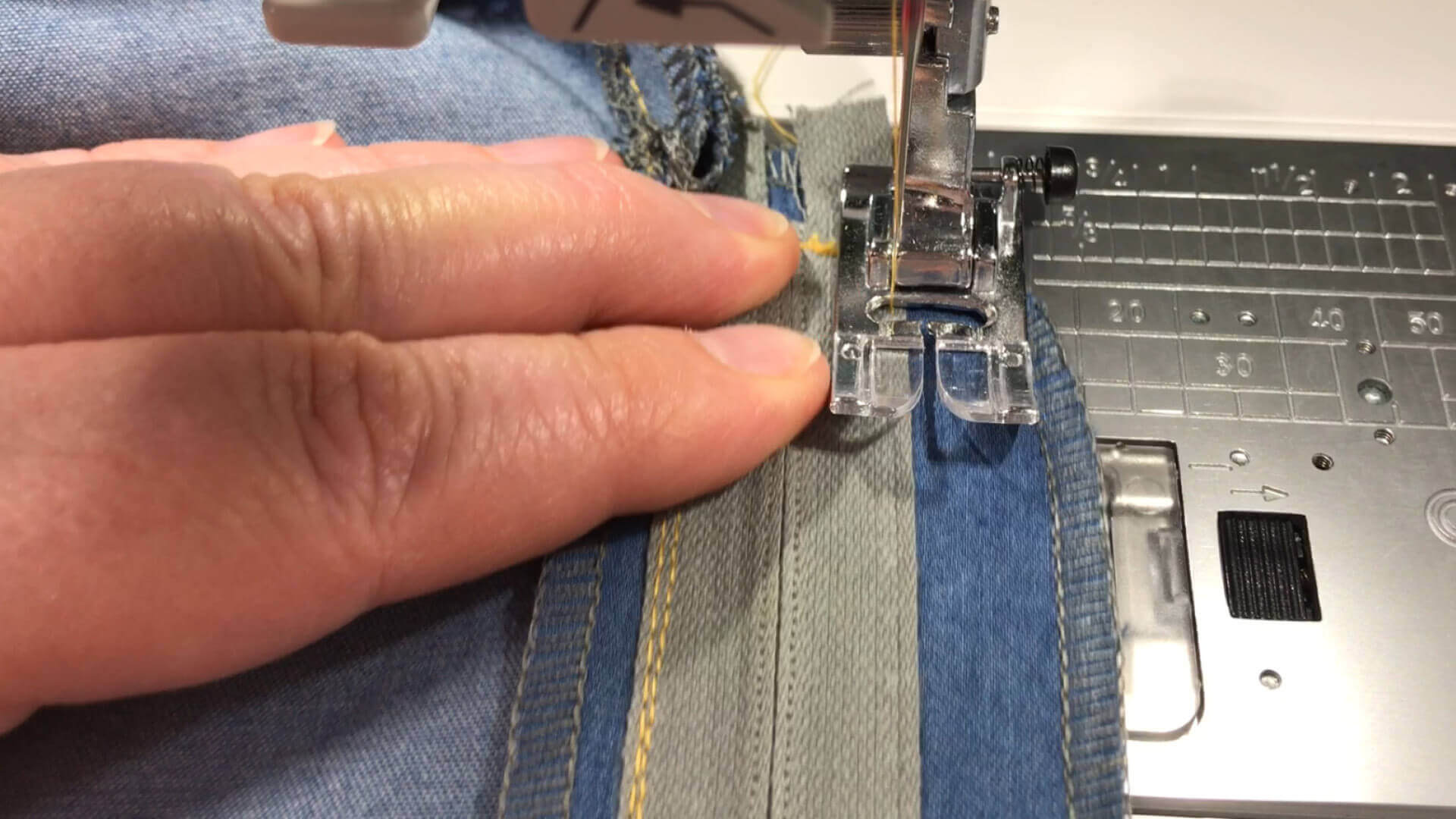
9. Fly topstiching
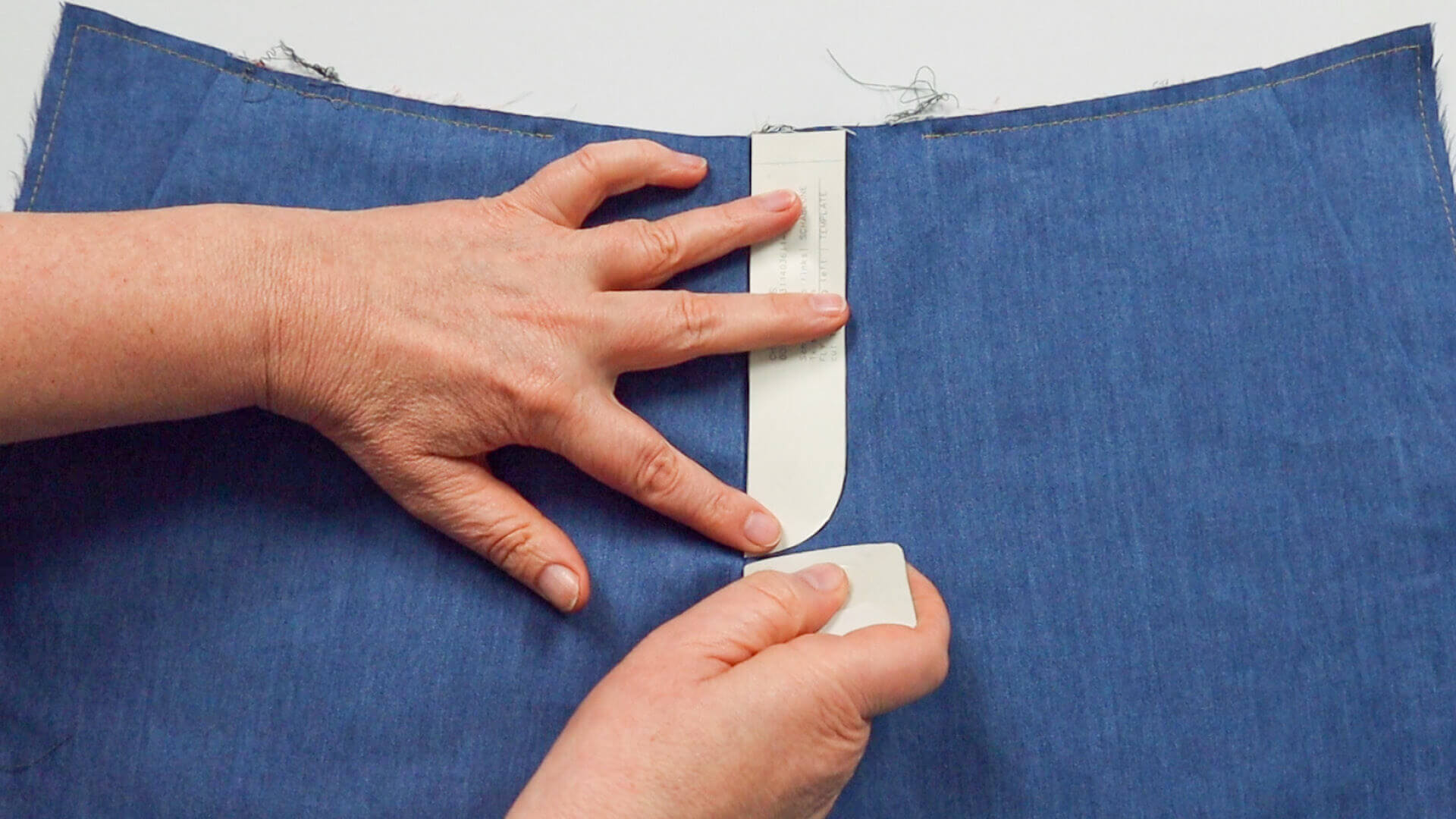
I place the fly template on the left front piece and mark the topstitching line.
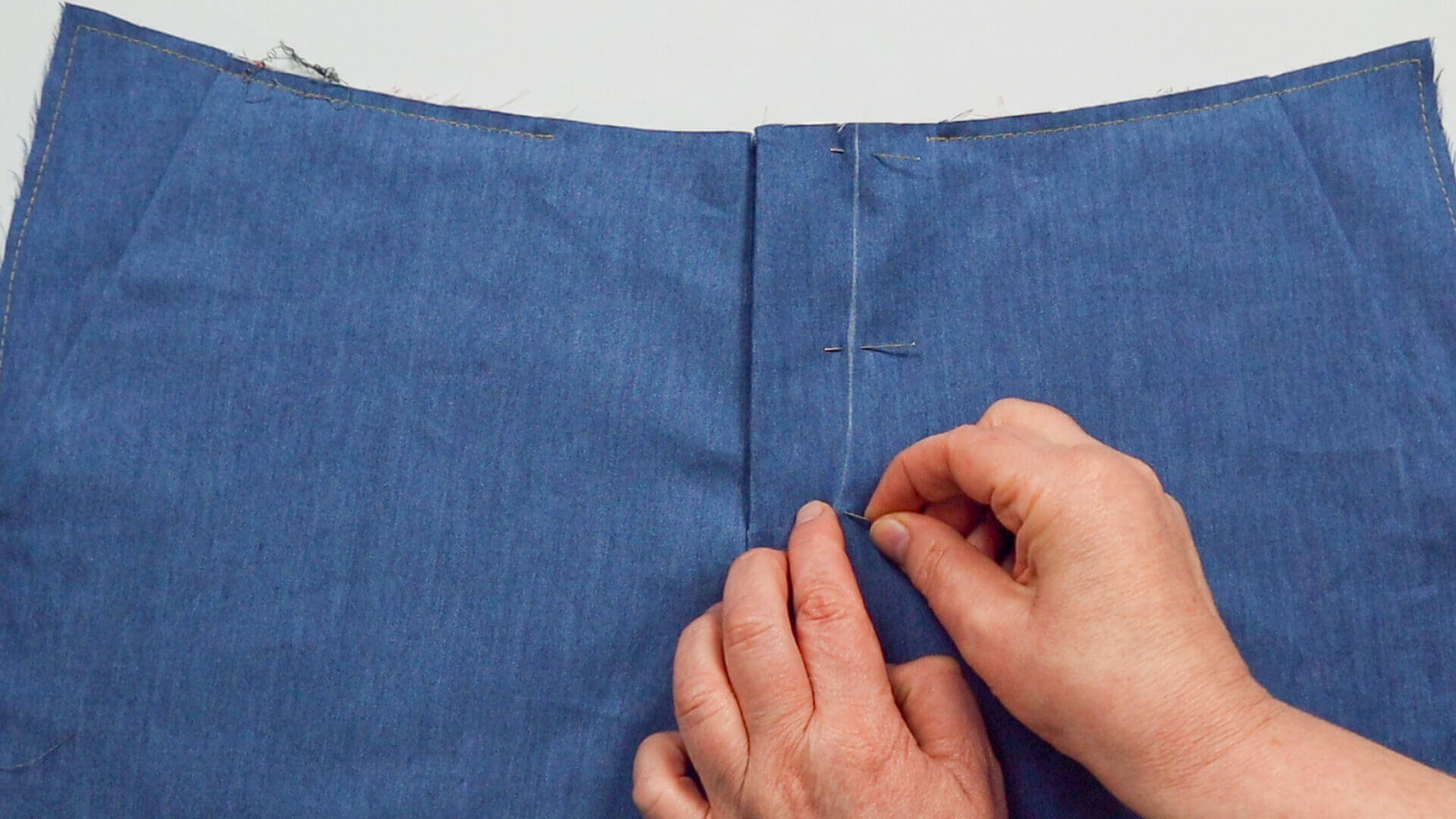
I pin fly facing and front piece together.
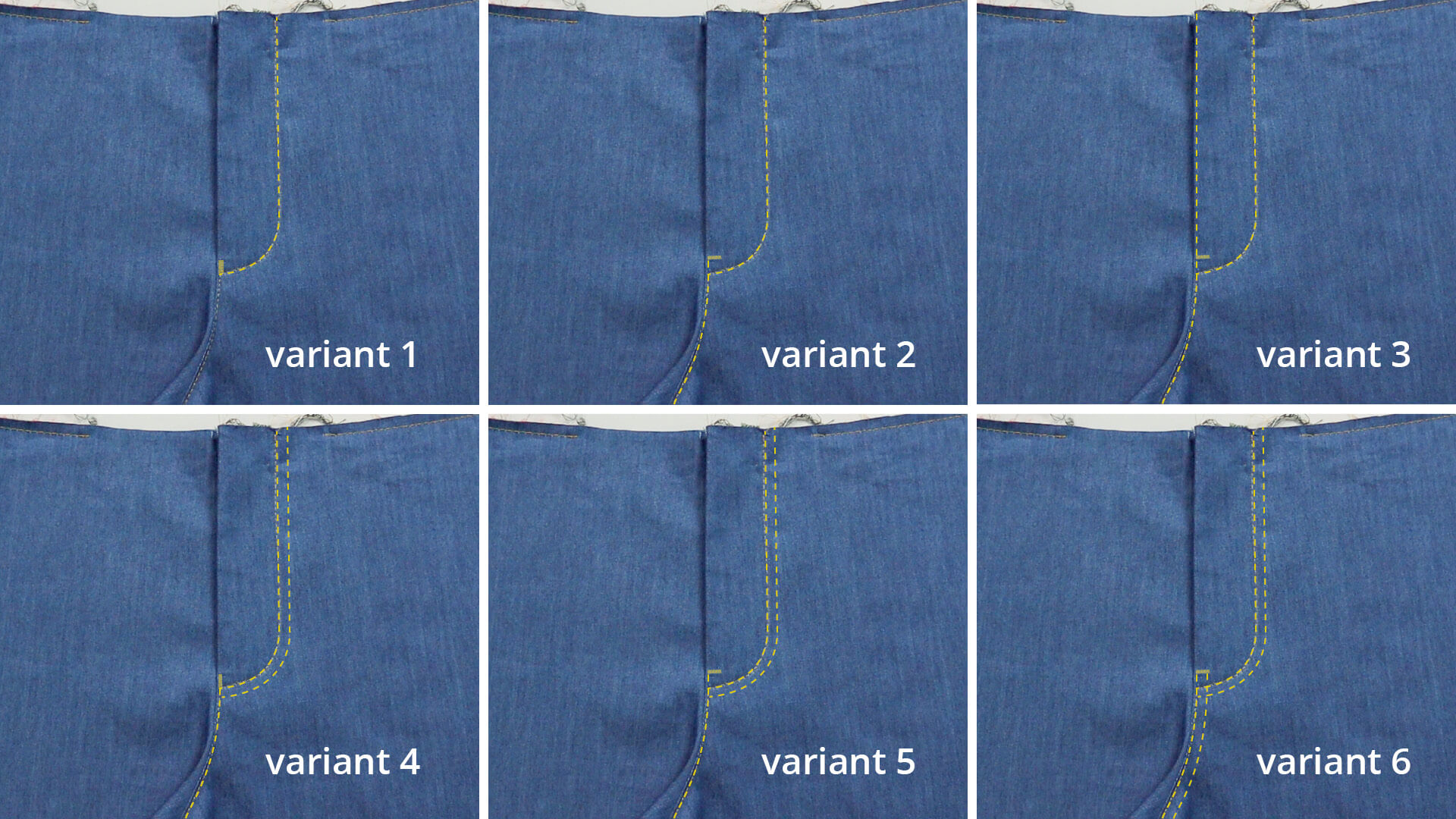
There are many options for designing the fly and the short crotch seam. I have shown a few examples here. You can topstitch the fly single or double, as well as the short crotch seam below the fly, which can also be left unstitched. You can work with a cross or lengthwise bartack at the end of the fly. However, latter is only done after the fly shield has been attached.
10. Connect fly shield
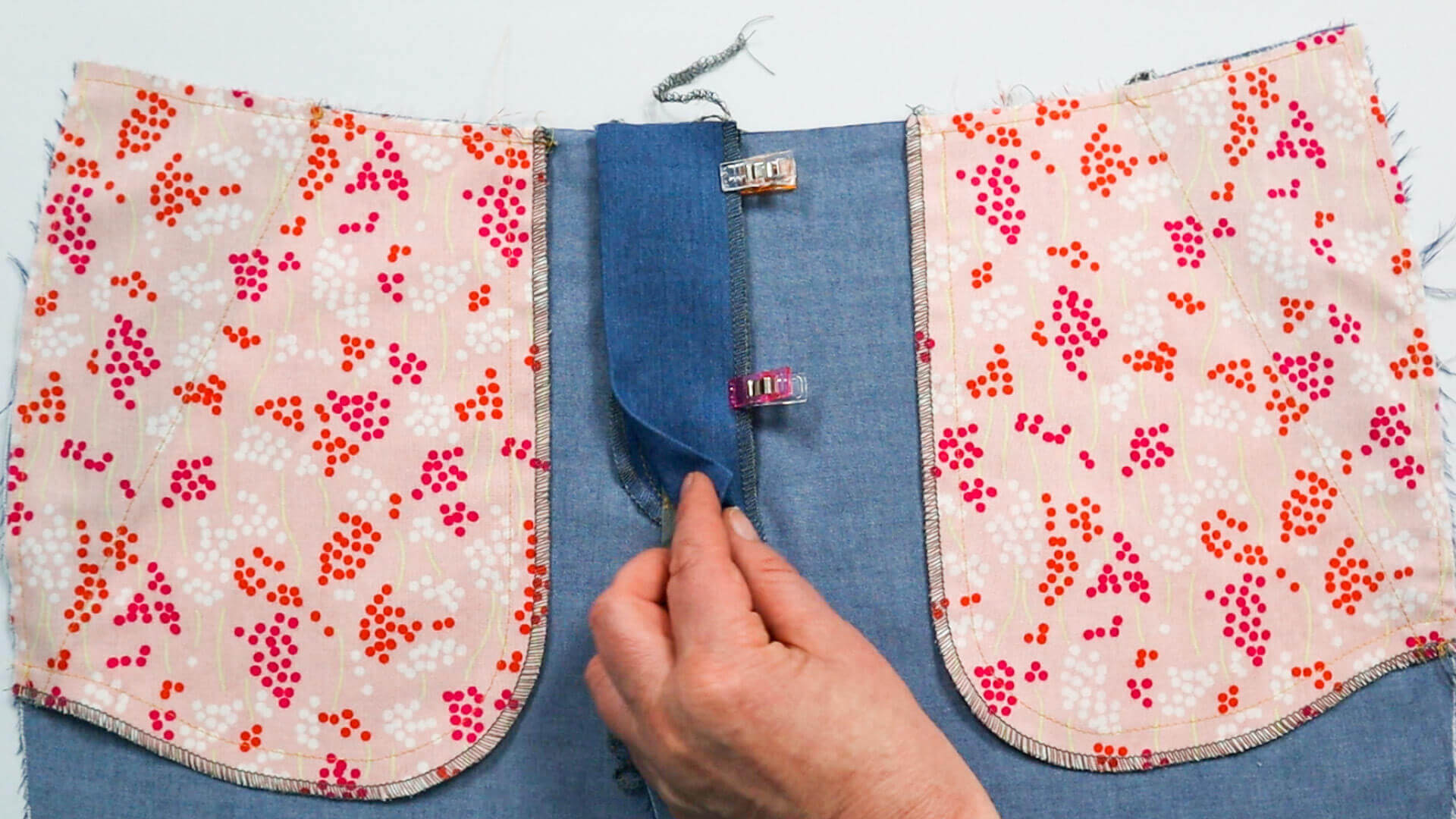
From the inside, I place the fly shield over the fly facing. I pin the serged long edge to the seam allowance of the fly facing and sew it in place.
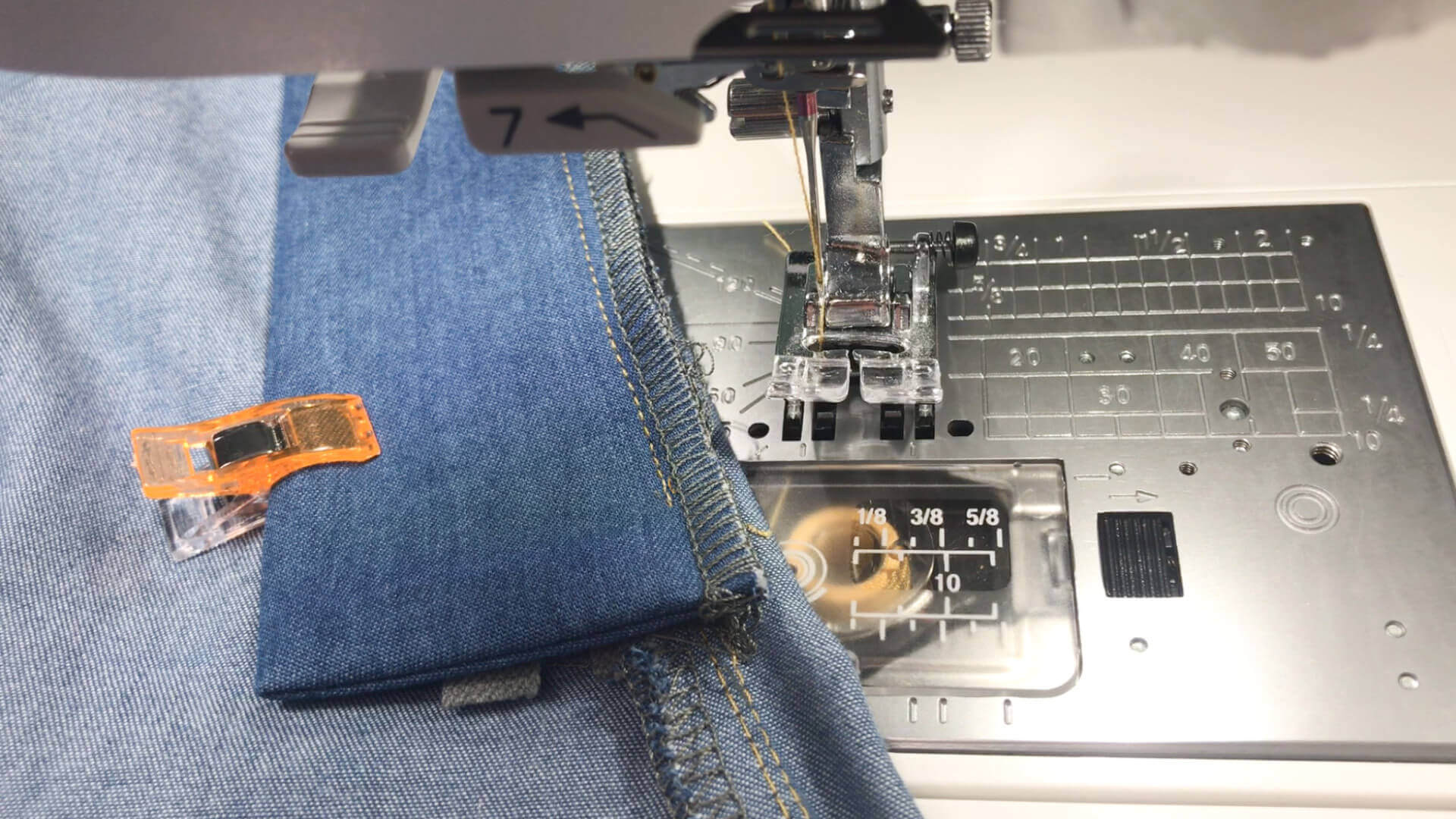
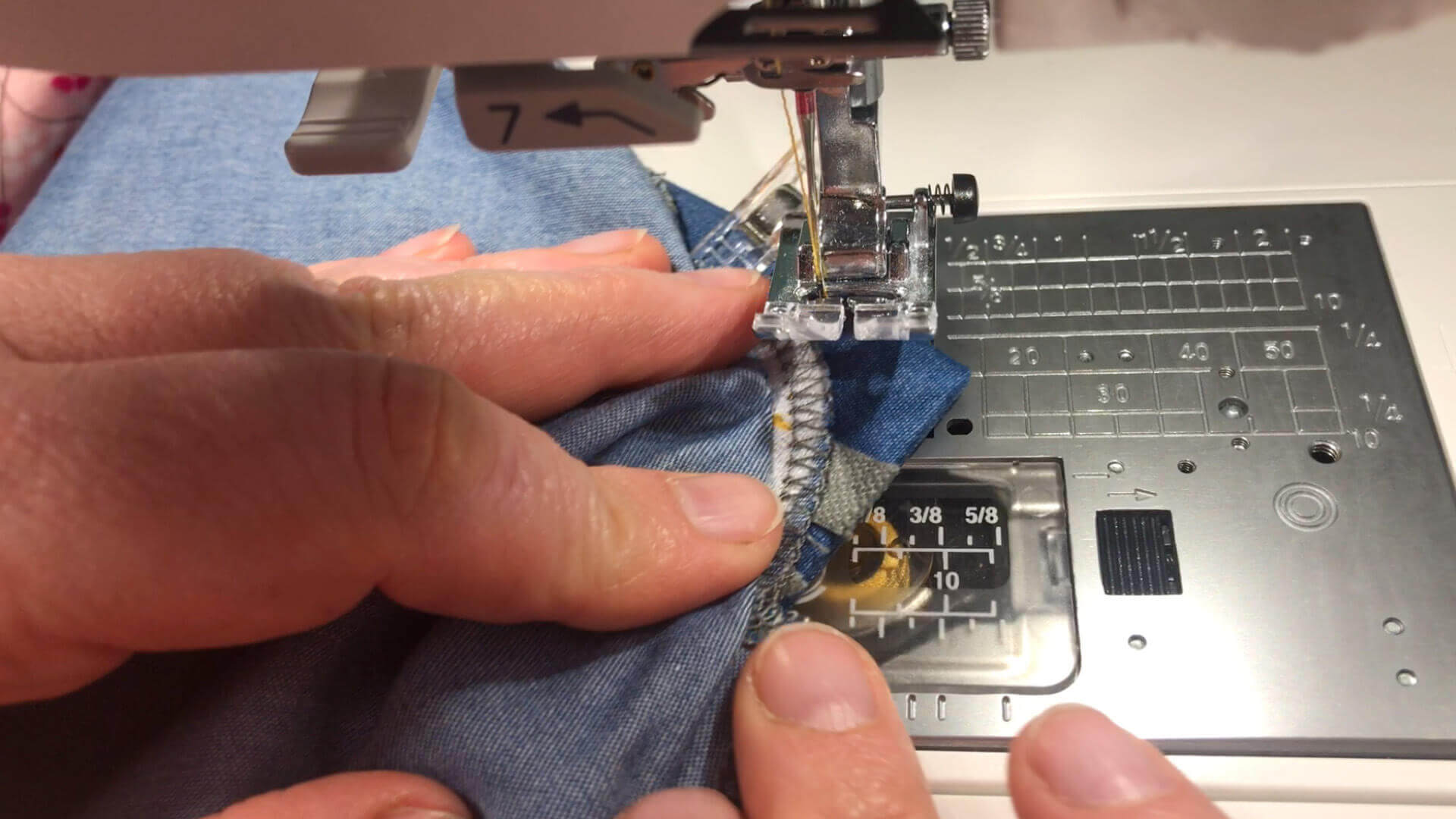
On the opposite side of the fly, I join the fly shield and fly facing with a short seam or bartack.
11. Bartack at fly with zipper
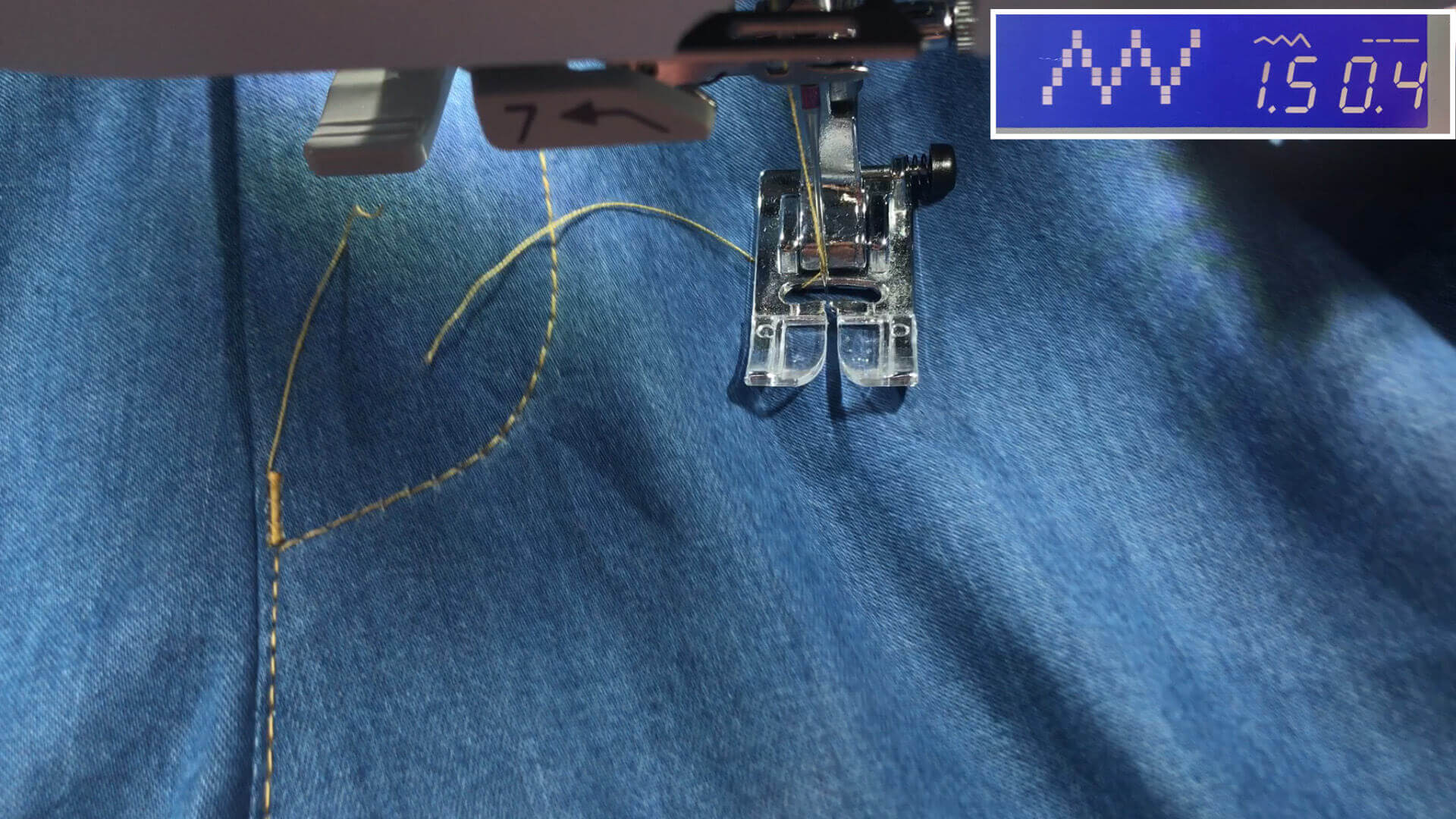
As described above, you can secure the end of the fly with a bartack. In this example, I used a narrow zig-zag stitch with a stitch width of 1.5 mm and a stitch length of 0.4 mm. I tried out the stitch on a test piece before applying it to the trousers.
12. Finished fly with zipper
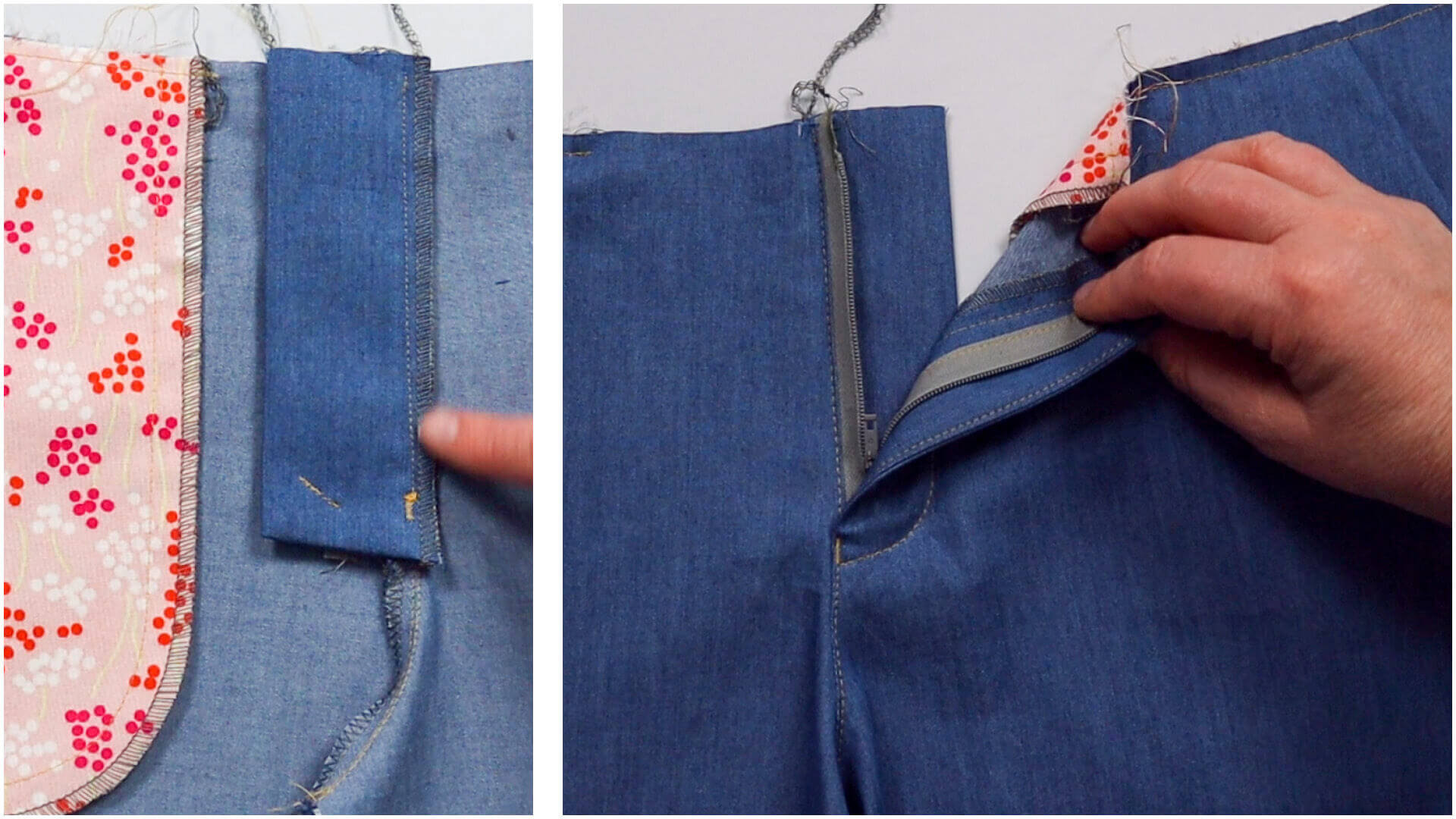
And this is what the finished fly with zipper looks like.
Below you will find the link to the next step:
If you’re not quite ready yet and perhaps want to start at the beginning, you’ll find some links here:



